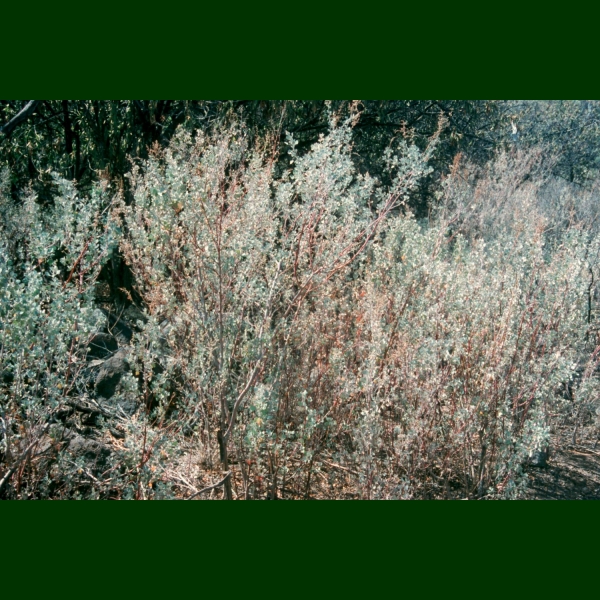 Hawaiian Name(s): ‘āheahea, ‘ahea, ‘āhewahewa, alaweo, alaweo huna (Ni‘ihau), ‘āweoweo, kāha‘iha‘i
Hawaiian Name(s): ‘āheahea, ‘ahea, ‘āhewahewa, alaweo, alaweo huna (Ni‘ihau), ‘āweoweo, kāha‘iha‘iScientific Name: Chenopodium oahuense
Vernacular Name: none
Family: Chenopodiaceae
Status: endemic
Authority: (Meyen) Aellen
Description: Lightly scented shrubs, sometimes tree-like.
Habitat Occuring as a common or occasional element of dry habitats, ranging from 0–2520 m from coastal zones to dry forest and subalpine shrubland (Wagner et al. 1990:538) on most main islands and some NWHI.
Medicines: This plant is used to treat ‘ea (thrush, etc.) and pa‘ao‘ao (ailments). The leaf buds are used to treat children; the bark is ingested [sometimes with niu (coconut, Cocos nucifera), kukui (Aleurites moluccana), lipoa (Dictyopteris spp.), or poi] as a cosmetic for children. For ‘ea, ‘aweoweo is ground together with uluhe (wawae ‘iole kuahiwi, cf. Huperzia spp. or Lycopodium spp.), ‘ala‘ula (wawae ‘iole kahakai, cf. Codium edule), ‘ilima (Sida fallax), and marine shells, then mixed with water and fed to children in poi or possibly ‘uala (sweet potato, Ipomoea batatas) (Chun 1994:64–66).
Non Medicinal Uses: Leaves cooked and eaten as greens (Hillebrande 1888:380; Malo 1951:23). Part of composite fish hooks (Kamakau 1976:77; Krauss 1993:43) "The kahuna ho‘omanamana called this plant ‘iloe holokula, because it was used everywhere to induce death…[also used] with the ‘ākia lau nui (Wikstroemia) and some bitter plants as firewood in the fireplaces used to send prayers" but also positive medicinal qualities (Chun 1994:64). The wood of the ‘aheahea is not true wood, but secondary growth (Lamb 1981:36)
Specific gravity of wood: unknown
Famous Locations:
Mele:
`Ōlelo Noeau:
Dye Color and Parts:
Kino lau:
Location on Bishop Museum Kalihi Campus:
Propagation Information: Easy. Seed bearing utricles are easily collected by hand, don't bury deep, seeds germinate in 1 week & continues for 2–3 weeks; 1st or 2nd set of true leaves appear in 1 month & should be transplanted to indivudual pots, 2-3 months after it reaches 1 foot it should be planted out (Culliney and Koebele 1999:39–41).
Native Plants Hawaii.
Seed: Seed length approximately 1 mm. Photograph: B.Kennedy.

Microscopy
Cross Section: Field of view: 2.6 mm x 1.6 mm. Photograph: H.Lennstrom.

Radial Section: Field of view: 2.6 mm x 1.6 mm. Photograph: H.Lennstrom.

Tangential Section: Field of view: 2.6 mm x 1.6 mm. Photograph: H.Lennstrom.

